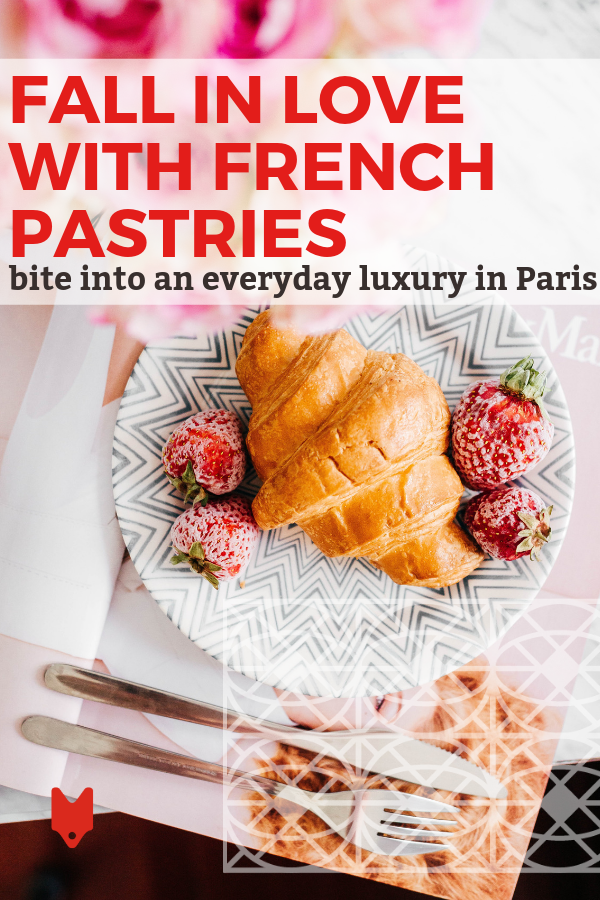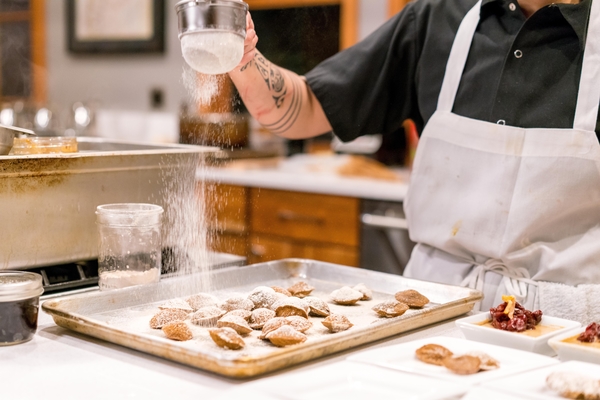Food-loving Paris is a playground for pastry. I may have come to Paris twelve years ago as a dedicated student of linguistics and French literature, but I quickly learned I’d need to learn another language entirely to fully immerse myself in the culture—the language of pastry.
And it was by focusing my attention on all manner of French pastry, classic and modern, that my love story with Paris blossomed beyond the books.

The art of French pastry
Boulangeries, pâtisseries and specialty food shops dot nearly every street corner in Paris. They are the lifeblood of Parisian street life as much any corner café or brasserie and while they appear to trade in the most obvious of sweet pleasures—from morning pastries like croissants and pain aux amandes to the more refined confections like the Saint-Honoré or the éclair—their value goes far beyond instant gratification.

Though once reserved for the elite (think of the royal court, Marie Antoinette and the association of aristocracy and robust bellies!), pastry and sweet indulgences today occupy a much broader, more accessible role. They are a cultural touchstone, an integral part of Sunday lunches with family, morning pick-me-ups or an afternoon snack—a ritual for all school-age children that carries over into adulthood—and they are venerated as works of art.
Thanks to food-driven television shows that have put the spotlight talented chefs, many of whom begin their careers in adolescence, the profession has benefited from an elevated image. Manual labor in the culinary arts is no longer considered lesser than but an honorable creative pursuit that preserves and modernizes a centuries-old trade. Through the work of pastry chefs and chocolatiers like Claire Damon of Des Gâteaux et Du Pain, Jacques Genin, Pierre Hermé, Nicolas Cloiseau of La Maison du Chocolat or Maxime Frédéric, the past is protected.

French pastry as an everyday luxury
If my obsession with pastry today persists it’s for more than the sheer gustatory thrill of biting into one of Bontemps’s filled sable cookies or feeling the light rosewater glaze and pâte feuilleté of Pierre Hermé’s Ispahan croissant crunch delicately between my teeth. It’s for the precision, passion and deft craftsmanship behind each individual pleasure. It’s for the broad embrace of such confections as part of a healthy, happy life. These are not “guilty pleasures,” as we so often think of them in other cultures, they are joys that can (and should) be enjoyed daily to lift the spirits.
When times are troubled and Parisians curb their spending, they still allow themselves a box of chocolates from Alain Ducasse’s Manufacture, a cinnamon roulé from Yann Couvreur or a pistachio-chocolate ‘escargot’ from Du Pain et Des Idées, a 10th arrondissement institution. And they’re always looking to discover industry innovations—whether it’s new, unexpected flavor associations, surprising forms, or simply the de-sweetening of recipes to make a pastry’s key ingredients, fruit, chocolate or nuts, shine on their own.
There’s a lot to love and a world of inventive pastry to discover in all Paris neighborhoods but it’s worth remembering that behind each morsel is a creative individual, keeping one of the most special (and my favorite) heritage skills alive.

Want to find the best pastries that most visitors miss? Discover delicious treats with us on our Paris Pastry and Chocolate Tour!
Love your taste
Lindsey definitely knows her pastries!